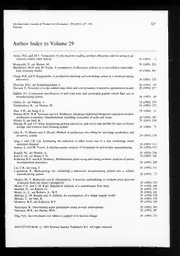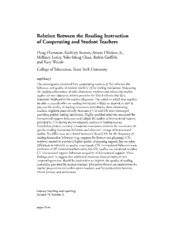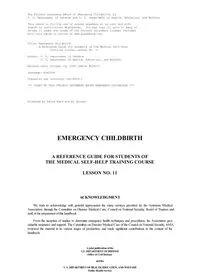
ERIC EJ839883: Texas 4-H Agents' Perceptions of Selected Competencies in the 4-H Professional Research, Knowledge, and Competencies Model PDF
Preview ERIC EJ839883: Texas 4-H Agents' Perceptions of Selected Competencies in the 4-H Professional Research, Knowledge, and Competencies Model
TEXAS 4-H AGENTS’ PERCEPTIONS OF SELECTED COMPETENCIES IN THE 4-H PROFESSIONAL RESEARCH, KNOWLEDGE, AND COMPETENCIES MODEL Amy Harder, Assistant Professor University of Florida Gary J. Wingenbach, Associate Professor Texas A&M University Abstract There are many competencies necessary for success as a 4-H agent. The 4-H Professional Research, Knowledge, and Competencies (PRKC) Model organizes competencies into six domains: (a) Youth Development, (b) Youth Program Development, (c) Volunteerism, (d) Partnerships, (e) Organizational Systems, and (f) Equity, Access and Opportunity (National 4-H Professional Development Task Force, 2004). Previous research (Harder & Dooley, 2007; Seevers, Baca & VanLeeuwen, 2005) identified competencies in the Organizational Systems domain as some of the most important, but most competency research has focused on volunteer management. A modified Borich (1980) model of needs assessment was used to determine the training needs of Texas 4-H agents in the Organizational Systems domain. Agents perceived they were more proficient in the competencies associated with program delivery and less proficient in competencies associated with their own personal wellness. Significant differences existed between perceived proficiency and importance levels for several competencies. Training is most needed in providing the knowledge, skills, and abilities required to overcome the stresses associated with careers as 4-H extension agents. Introduction/Theoretical Framework needs by measuring their perceptions of the importance of selected competencies. A Cooperative Extension 4-H agents must similar approach was taken to determine the be competent in many areas, including youth competencies needed by Extension workers and volunteer development, public relations, to effectively teach farmers (Martin & Bin and programming (Cooper & Graham, Sajilan, 1988). Extension research has 2001). Some 4-H agents may be focused on employees’ perceived overwhelmed by the diverse skills required competence in areas such as volunteer for effective job performance. One method administration (King & Safrit, 1998), human for helping agents understand the skills resource management (Haynes, 2000; needed for excelling in their roles is the use Lindner, 2001), and public issues education of competency models. According to Stone (Singletary, Smith, Hill, & Corcoran, 2004). and Bieber (1997, ¶ 2), competencies are Several state-based competency models ―the application of knowledge, technical have been proposed for 4-H (Boyd, 2004; skills and personal characteristics leading to Cooper & Graham, 2001; Gregg & Irani, outstanding performance.‖ Competency 2004), but only one national model exists. models clarify what is expected of effective According to Astroth, Garza, and Taylor employees and can be used to ensure (2004), ―The 4-H Professional Research and employees are adequately prepared for their Knowledge Base (4-Hprk) has been seen as professional roles (Stone, 1997). the foundation for competency guidelines in Historically, Cooperative Extension has the 4-H youth development profession since used competencies to assess employees’ it was created in 1985‖ (p. 34). In 2004, a training needs. Keita and Luft (1987) National Professional Development Task investigated agricultural agents’ training Force convened to formally revise the Journal of Agricultural Education 64 Volume 49, Number 2, 2008 Harder & Wingenbach Texas 4-H Agents’ Perceptions… 4-Hprk. The revision process included a include time management, conflict review of the existing model, examination of management, and communication (Stone & internal and external youth development Rennekamp, 2004). Harder and Dooley’s research, and interviews with state 4-H results are supported by Seevers et al.’s program leaders, administrators, content (2005) identification of conflict management experts, and internal and external youth and people skills as highly requested areas development professionals (Stone & for training. A needs assessment should be Rennekamp, 2004). A draft document was conducted to expand the existing then shared with stakeholders and released understanding of priority training needs via 4-H-related Web sites in an effort to to include the Organizational Systems solicit additional input. The resulting domain. document was renamed the 4-H Professional Research, Knowledge, and Competencies Purpose and Objectives (4-H PRKC) model. The 4-H PRKC model consists of six The purpose of this study was to domains representing subject matter areas determine the professional development that ―focus on what matters most when needs of 4-H extension agents in Texas working with young people‖ (National 4-H using the Organizational Systems (OS) Professional Development Task Force, domain of the 4-H PRKC. Specific 2004, p. 1), including: (a) Youth objectives were to: Development, (b) Youth Program Development, (c) Volunteerism, (d) 1. Establish levels of reliability for the Partnerships, (e) Organizational Systems, six scales in the OS domain. and (f) Equity, Access and Opportunity. 2. Describe agents’ perceived levels of Each domain lists the competencies proficiency for competencies in the necessary for effectiveness within that OS domain. subject. 3. Describe the perceived levels of Past studies of competencies have importance assigned by agents to emphasized the Volunteerism domain. competencies in the OS domain. Hange, Seevers, and VanLeeuwen (2002) 4. Compare proficiency and importance compared 4-H agents’ attitudes and levels for each competency to perceived competence in relation to nine determine priority training needs for volunteer management competencies listed Texas 4-H agents. in the 1985 version of the 4-H PRKC. Although agents perceived the competencies Methods to be important, they were less confident in their abilities to perform the competencies. A census was conducted on the Hange et al. concluded volunteer population of interest. According to management training was necessary to Fraenkel and Wallen (2006), a census is decrease the gap between competence and appropriate when the entire population is of importance. The findings of their study interest. However, care should be taken confirmed previous work by King and Safrit when attempting to generalize the results of (1998) and Collins (2001) which this study to any other population. The target documented similar disparities related to population for this study was 4-H extension volunteer management competencies. agents in Texas. The Texas 4-H program is Although the Volunteerism domain of built upon a traditional project and the 4-H PRKC has been well-examined, community club-based model (Texas research into the other five domains has Cooperative Extension, 2005). Texas been limited. Yet, a study by Harder and Cooperative Extension plans statewide Dooley (2007) found that most of the professional development opportunities competencies perceived to be important by (Boleman, James & Couch, 2002; Stone & 4-H agents were in the Organizational Coppernoll, 2004). Therefore, it is important Systems domain, not in Volunteerism. to understand training needs on a statewide Organizational Systems competencies basis. Journal of Agricultural Education 65 Volume 49, Number 2, 2008 Harder & Wingenbach Texas 4-H Agents’ Perceptions… Participants were identified using the needs assessment was used to measure Texas County Extension Offices (Texas participants’ perceptions of 59 competency Cooperative Extension, 2006) online statements. Previous research supports the directory. There were 83 agents with a job use of modified Borich models to study 4-H title that included 4-H Youth Development. agent competencies (Culp & Kohlhagen, This list was reviewed by the associate state 2004; Waters & Haskell, 1989). leader for accuracy. Corrections were made Participants used a four-point scale to reduce the population to 81 agents. (0 = No Proficiency/Importance, 1 = An online questionnaire was used for Low Proficiency/Importance, 2 = Average data collection. The instrument was derived Proficiency/Importance, and 3 = High from the competency statements in the Proficiency/Importance) to rate the levels of Organizational Systems (OS) domain of the importance and proficiency for each 4-H PRKC model (National 4-H competency. Table 1 includes example Professional Development Task Force, competency statements from the OS 2004). A modified Borich (1980) model of domain. Table 1 Organizational Systems Competencies: Organizational Effectiveness Competency Statement Understands CES/4-H history, structure, and mission. Displays commitment to CES/4-H/mission. Uses mission and vision to shape programs and organizational structure. Uses mission and vision for long-range planning. Plans, manages, and embraces change. Establishes appropriate management structures. Creates governance boards. Monitors and support board and committee work. Content validity of the competency instrument for this study for content and statements was established by a panel of face validity. experts during the development of the 4-H Data were collected according to PRKC (National 4-H Professional Dillman’s (2000) Tailored Design Method. Development Task Force, 2004). The task A personalized pre-notice was sent by force included county agents, state 4-H e-mail in October 2006. Of the 81 original specialists, state 4-H program directors, and e-mail addresses, 76 were valid. A members of the National Collaboration for notice was e-mailed two days after the Youth, the National 4-H Council, and pre-notice. The notice included individual National 4-H Headquarters. The 4-H p a s s w ords and a hyperlink to the study’s PRKC competencies were reviewed by a information and consent page. The seven-member professional development information and consent page explained the subject matter expert panel. Two s t u d y’s purpose, provided Internal Review additional experts from Texas B oard approval, and the researcher’s contact Cooperative Extension reviewed the information. Texas 4-H agents who agreed Journal of Agricultural Education 66 Volume 49, Number 2, 2008 Harder & Wingenbach Texas 4-H Agents’ Perceptions… to participate in the study entered their professional development needs in the unique passwords on the consent page, Organizational Systems domain. which forwarded to the online questionnaire. Reminders were e-mailed to non- Results/Findings respondents every three business days until data collection ceased. A total of three Objective 1: Reliability reminders were e-mailed. One participant Cronbach’s alpha coefficients were opted out of the study which reduced the calculated to measure the internal accessible population (N = 75). A final consistency of the instrument’s scales. response rate of 78.67% (n = 59) was Reliability coefficients of .80 or higher are achieved. Non-response error was controlled considered acceptable (Gall et al., 2007). by comparing early to late respondents Cronbach’s alpha coefficients for (Lindner, Murphy, & Briers, 2001). Early proficiency ranged from .64 to .88. respondents were defined as those who Cronbach’s alpha coefficients for responded to the first stimulus (n = 28). Late importance ranged from .70 to .89. respondents participated after receiving the Reliability levels for individual scales are reminder stimuli (n = 31). A two-group presented in Table 2. independent t-test was used to compare the early and late respondents’ summed scores Objectives 2 and 3: Proficiency from the Personal Effectiveness scale (Gall, and Importance Gall, & Borg, 2007). No significant Agents perceived themselves to be differences between early and late highly proficient in ―Is accountable and respondents were found for proficiency t(56) accepts responsibility for actions‖ (M = = .405, p > .05, or importance t(57) = 2 . 8 1 , SD = 0.39) and had low proficiency in -0.357, p > .05. Thus, it was concluded the ―Develops grants and proposals‖ (M = 1.29, results could be generalized to the target SD = 0.87). The most important competency population. was ―Follows ethical standards of Two separate methods were used to professionalism at all times‖ (M = 2.92, SD analyze the data. Reliability for the six OS = 0.33). The least important competency scales was determined by calculating was ―Promotes the University‖ (M = 1.85, Cronbach’s alpha coefficient. Data were also SD = 1.03). Due to the excessive space analyzed according to the ranking procedure necessary to present the means and standard described by Edwards and Briers (1999). deviations for all 59 competencies, only The following procedure was repeated for competencies with the five highest means each competency. for proficiency and importance are listed in A discrepancy score was obtained for Table 3. Complete results are available from each participant by subtracting his/her the authors upon request. perceived level of proficiency from the Table 4 presents the means and standard perceived level of importance for a specific deviations for the proficiency and competency. Each discrepancy score was importance levels of each scale. then multiplied by the mean importance Proficiency ratings were highest for level for that competency, resulting in a Professionalism competencies (M = 2.42, weighted discrepancy score for each SD = 0.38). Agents were least proficient in participant. The weighted discrepancy the Resources Development and scores were summed and divided by the Management competencies (M = 2.09, SD = total number of usable observations to yield 0.45). Agents perceived Personal a mean weighted discrepancy score for the Effectiveness competencies to be the most competency. The mean weighted important (M = 2.73, SD = 0.38), while discrepancy scores for all the competencies Organizational Effectiveness competencies were ranked to determine the priorities of were least important (M = 2.37, SD = 0.45). Journal of Agricultural Education 67 Volume 49, Number 2, 2008 Harder & Wingenbach Texas 4-H Agents’ Perceptions… Table 2 Reliability of the Organizational Systems Domain Scales Alpha Levels Scale Proficiency Importance Communication Strategies .64 .70 Organizational Effectiveness .74 .87 Personal Effectiveness .71 .85 Professionalism .84 .88 Resources Development and Management .77 .82 Risk Management .88 .89 Table 3 Competency Ratings: Proficiency and Importance Proficiency Importance Competency M SD M SD Is accountable and accepts responsibility for actions. 2.81 0.39 2.88 0.33 Understands, follows and communicates policies regarding 2.76 0.43 2.75 0.44 the 4-H name and emblem. Follows ethical standards of profession at all times. 2.76 0.47 2.92 0.28 Demonstrates attributes of a positive role model. 2.71 0.46 2.85 0.36 Displays commitment to CES/4-H/mission. 2.68 0.47 2.56 0.60 Promotes positive youth development to decision makers. 2.59 0.53 2.85 0.36 Listens effectively and actively. 2.53 0.54 2.86 0.35 Note. Scale: No Proficiency/Importance = 0, Low Proficiency/Importance = 1, Average Proficiency/Importance = 2, High Proficiency/Importance = 3. Journal of Agricultural Education 68 Volume 49, Number 2, 2008 Harder & Wingenbach Texas 4-H Agents’ Perceptions… Table 4 Perceived Proficiency and Importance Ratings for OS Scales Proficiency Importance Scale M SD M SD Professionalism 2.42 0.37 2.57 0.38 Risk Management 2.38 0.36 2.61 0.33 Organizational Effectiveness 2.32 0.33 2.37 0.46 Communication Strategies 2.23 0.31 2.65 0.30 Personal Effectiveness 2.14 0.35 2.73 0.30 Resources Development and Management 2.09 0.45 2.42 0.45 Note. Scale: No Proficiency/Importance = 0, Low Proficiency/Importance = 1, Average Proficiency/Importance = 2, High Proficiency/Importance = 3. Objective 4: Priority Training Needs and mission; b) Promotes the University; Mean weighted discrepancy scores c) Promotes the youth development (MWDS) were calculated for each of the profession; d) Seeks professional competencies. MWDS were initially affiliations that will enhance the youth calculated by subtracting perceived development profession and their own proficiency from perceived importance. professional knowledge base; and e) When importance exceeded proficiency, a Understands, follows, and communicates positive MWDS resulted; conversely, when policies regarding the 4-H name and proficiency exceeded importance, a negative emblem. MWDS resulted. Positive MWDS were Topics within the OS domain varied interpreted as a need for training in a according to the need for training. specific competency, while negative MWDS Participants had very low need for training indicated no training was necessary. in Professionalism competencies. Training The MWDS for competencies rated as was most needed for the Personal high training needs are in Table 5. The Effectiveness competencies. Ranges of lowest MWDS had negative values: a) MWDS for each scale are listed in Understands CES/4-H history, structure, T a b l e 6. Table 5 High Priority Training Needs Competency Mean Weighted Discrepancy Scores Practices stress management and stress reduction. 2.87 Incorporates wellness practices into personal life style. 2.19 Manages time effectively. 2.11 Balances conflicting demands. 2.02 Journal of Agricultural Education 69 Volume 49, Number 2, 2008 Harder & Wingenbach Texas 4-H Agents’ Perceptions… Table 6 Ranges of MWDS for Selected 4-H PRKC Scales Scale Range Personal Effectiveness 0.49 – 2.87 Communication Strategies 0.49 – 1.68 Resources Development and Management 0.40 – 1.62 Risk Management -0.05 – 1.34 Professionalism -0.47 – 1.06 Organizational Effectiveness -0.53 – 0.60 Conclusions/Recommendations/ 4-H agents were least proficient in Implications Personal Effectiveness competencies. Extension agents have struggled to balance The first objective of the study was to their careers with their personal lives for establish levels of reliability for the many years (Ensle, 2005; Fetsch & Pergola, Organizational Systems domain of the 4-H 1991). Reasons for job burnout include night Professional Research, Knowledge and meetings, weekend events, and unexpected Competency model. Five of the six scales clientele drop-ins. More complex reasons (Professionalism, Personal Effectiveness, may exist. Ensle found agents were Organizational Effectiveness, Risk burdened by the need to be accountable to Management, and Resources Development multiple administrations (county, state, and and Management) had acceptable levels of national). The constant pressure to prove the reliability for measuring proficiency and educational value of extension programs importance. The Communication Strategies was an additional source of stress (Ensle). scale failed to attain an acceptable level of Unfortunately, most of these reasons are reliability. If the reliability level was related inherently linked with Extension work, to a small sample size or return rate, then which makes overcoming them a challenge. similarly low levels of reliability should The third objective was to describe the have been observed across all six scales. The perceived importance of competencies lack of such occurrences suggests a problem within the OS domain. Grant writing was a with the construction of the Communication competency in which the agents did not Strategies scale. perceive themselves to be proficient. Grant The second objective was to describe writing was only assigned average agents’ perceived levels of proficiency for importance. One might speculate the lack of competencies in the OS domain. Agents proficiency assigned to grant writing is perceived themselves to be proficient in related to its perceived lack of importance. many of the competencies. They were most The lack of importance is interesting proficient in Professionalism and Risk because grant writing has been considered Management competencies, which included an integral part of subsidizing programs and competencies such as ―Demonstrates salaries for at least 20 years (Wilson, 1985). attributes of a positive role model,‖ and Barth, Stryker, Arrington, and Syed (1999) ―Designs and maintains a safe, inclusive suggested the pursuit of alternative funds program environment for youth and adults.‖ became necessary because of reasons such Due to the nature of the 4-H program, agents as insufficient federal funding and the often have the opportunity to practice these expansion of Extension programming competencies. beyond the traditional USDA/CSREES Journal of Agricultural Education 70 Volume 49, Number 2, 2008 Harder & Wingenbach Texas 4-H Agents’ Perceptions… mission. Funding is predicted to continue its reference for evaluating the success of decline due to private sector competition and training interventions, and (c) as a reference insufficient political support (Comer, for reliability. This study is limited by the Birkenholz, & Stewart, 2004). It would be a small population size and the examination of surprise if grant writing did not take on a a single domain. Replicating this study on a more important role in Texas in the next broader scale is recommended, as it would several years. An increase in proficiency increase the inference base for which may become a necessity. generalizations may be made. However, Personal Effectiveness competencies researchers are encouraged to revise and were perceived to be the most important. pilot test the Communication Strategies Conflict management and time management, scale of the instrument prior to data competencies included in the Personal collection. This may increase the likelihood Effectiveness domain, were also identified of attaining an acceptable level of reliability. as important in the Harder and Dooley Future research should investigate the (2007) study. The ascribed level of remaining domains so a greater importance is particularly worth noting understanding of the 4-H PRKC can be because agents did not perceive themselves developed. to be proficient in Personal Effectiveness. The problem may be endemic to a References culture which often equates success and respect with the amount of time dedicated to Astroth, K. A., Garza, P., & Taylor, B. the job. (2004). Getting down to business: Defining Organizational Effectiveness was the competencies for entry-level youth workers. least important scale. Agents favored New Directions for Youth Development, competencies which were more practical, 104, 25-37. such as ―Listens effectively and actively,‖ over more abstract concepts like ―Uses Barth, J. A., Stryker, B. W., Arrington, mission and vision to shape programs and L. R., & Syed, S. (1999). Implications of organizational structure.‖ This can likely be increased alternative revenue for the attributed to a difference in how frequently Cooperative Extension system: Present and the competencies are used. An agent can be future strategies for success. Journal of expected to set priorities, listen actively, and Extension, 37(4), Article comm1. Retrieved mediate conflict on a regular basis. The October 23, 2006, from http://www.joe.org/ integration of mission and vision into joe/1999august/comm1.html program planning is most commonly associated with the creation of plans of Boleman, C. T., James, D. L., & Couch, work, an activity that traditionally occurs on M. E. (2002). 4-H BEST: A new an annual basis. professional development program for 4-H Finally, the study sought to determine county extension agents. Journal of priority training needs for Texas 4-H agents. Extension, 40(3), Article iw5. Retrieved Training is most needed to assist agents with October 23, 2006, from http://www.joe.org/ achieving proficiency in the Personal joe/2002june/iw5.html Effectiveness competencies. The five highest MWDS scores were for Personal Borich, G. D. (1980). A needs Effectiveness competencies. The need for assessment model for conducting follow-up training in the area of stress management studies. Journal of Teacher Education, and stress reduction is significant. Agents 31(3), 39-42. must be able to gain proficiency in Personal Effectiveness to combat the burn-out trend Boyd, B. L. (2004). Extension agents as so commonly associated with Extension. administrators of volunteers: Competencies This study provides important data needed for the future. Journal of Extension, which may be used: (a) to plan training 42(2), Article a4. Retrieved September 26, opportunities addressing Personal 2006, from http://www.joe.org/joe/2004 Effectiveness competencies, (b) as a april/a4.shtml Journal of Agricultural Education 71 Volume 49, Number 2, 2008 Harder & Wingenbach Texas 4-H Agents’ Perceptions… Collins, M. (2001). Michigan 4-H youth Fraenkel, J. R., & Wallen, N. E. (2006). development agents perceptions of the How to Design and Evaluate Research (6th importance of and their competence with ed.). New York: McGraw-Hill Higher selected volunteer management functions. Education. Unpublished thesis, The Ohio State University, Columbus. Gall, M. D., Gall, J. P., & Borg, W. R. (2007) Education Research: An Introduction Comer, M. M., Birkenholz, R. J., & (8th ed.). Boston: Pearson Education. Stewart, B. R. (2004). The role of the Cooperative Extension service as perceived Gregg, J. A., & Irani, T. A. (2004). Use by North Carolina Cooperative Extension of information technology by county administrators. Journal of Southern extension agents of the Florida Cooperative Agricultural Education Research, 54(1), Extension Service. Journal of Extension, 156-167. 42(3), Article rb2. Retrieved September 26, 2006, from http://www.joe.org/joe/ Cooper, A. W., & Graham, D. L. (2001). 2004june/rb2.shtml Competencies needed to be successful county agents and county supervisors. Hange, J. S., Seevers, B. S., & Journal of Extension, 39(1), Article rb3. VanLeeuwen, D. (2002). 4-H youth Retrieved September 19, 2006, from development extension agents’ attitudes http://www.joe.org/joe/2001february/rb3.ht towards volunteer management ml competencies. Proceedings of the American Association of Agricultural Education Culp, K., III, & Kohlhagen, B. S. (2004). (AAAE). Retrieved October 9, 2006, from Kentucky 4-H agents’ perceptions of their http://aaae.okstate.edu/proceedings/2002/N levels of competency and frequency of use AERC/4-H%20Hange-Seevers-VanLeeuwe of volunteer administration function. n.doc Journal of Agricultural Education, 45(2), 1-13. Harder, A., & Dooley, K. (2007). Perceptions of important competencies for Dillman, D. A. (2000). Mail and Internet early-career and established 4-H agents. Surveys: The Tailored Design Method (2nd Journal of Southern Agricultural Education ed.). New York: John Wiley & Sons. Research, 57(1), 43-52. Edwards, M. C., & Briers, G. E. (1999). Haynes, B. R. (2000). Management Assessing the inservice needs of entry-phase skills of county extension administrators: agriculture teachers in Texas: A discrepancy Are they sufficient to do the job? Journal of model versus direct assessment. Journal of Extension, 38(2), Article rb2. Retrieved Agricultural Education, 40(3), 40-49. September 26, 2006, from http://www.joe. org/joe/2000april/rb2.html Ensle, K. M. (2005). Burnout: How does Extension balance job and family? Journal Keita, D., & Luft, V. D. (1987). of Extension, 43(3), Article a5. Retrieved Professional competencies needed by November 22, 2006, from http://www.joe. beginning Cooperative Extension org/joe/2005june/a5.shtml agricultural agents in Minnesota, North Dakota, and South Dakota. Journal of Fetsch, R. J., & Pergola, J. (1991). Agricultural Education, 28(4), 40-49. Effective burnout prevention program. Journal of Extension, 29(4), Article rb6. King, J., & Safrit, R. D. (1998). Retrieved November 22, 2006, from Extension agents’ perceptions of volunteer http://www.joe.org/joe/1991winter/rb6.html management. Journal of Extension, 36(3), Journal of Agricultural Education 72 Volume 49, Number 2, 2008 Harder & Wingenbach Texas 4-H Agents’ Perceptions… Article a2. Retrieved September 26, 2006, Journal of Extension, 35(2), Article tt2. from http://www.joe.org/joe/1998june/a2. Retrieved September 26, 2006, from html http://www.joe.org/joe/1997april/tt2.html Lindner, J. R. (2001). Competency Stone, B. B., & Beiber, S. (1997). assessment and human resource Competencies: A new language for our management performance of county work. Journal of Extension, 35(1), Article extension chairs in Ohio. Journal of comm1. Retrieved September 26, 2006 from Agricultural Education, 42(4), 21-31. http://www.joe.org/joe/1997february/comm 1.html Lindner, J. R., Murphy, T. H., & Briers, G. E. (2001). Handling nonresponse in Stone, B., & Coppernoll, S. (2004). You, social science research. Journal of extension, and success: A competency-based Agricultural Education, 42(4), 43-53. professional development system. Journal of Extension, 42(2), Article iw1. Retrieved Martin, R. A., & Bin Sajilan, S. (1988). October 23, 2006, from Teaching competencies needed by extension http://www.joe.org/joe/2004april/iw1.shtml workers in transferring agricultural technologies to Malaysian farmers. Journal Stone, B., & Rennekamp, R. (2004). of Agricultural Education, 30(2), 68-72. New Foundations for the 4-H Youth Development Profession: 4-H Professional National 4-H Professional Development Research, Knowledge, and Competencies Task Force (2004). New Foundations for the Study, 2004. Conducted in cooperation with 4-H Youth Development Profession: 4-H the National 4-H Professional Development Professional Research, Knowledge, and Task Force. National 4-H Headquarters, Competencies Study, 2004. National 4-H CSREES, USDA. Headquarters, Cooperative State Research Education and Extension Service, United Texas Cooperative Extension. (2005). States Department of Agriculture. What is 4-H? Retrieved May 30, 2007, from http://texas4-h.tamu.edu/general/whatis4h. Seevers, B. S., Baca, J. S., & htm VanLeeuwen, D. (2005). Training methods and needs related to volunteer management Texas Cooperative Extension. (2006). competencies of extension 4-H youth Texas County Extension Offices. Retrieved development agents. Journal of Extension, September 23, 2006, from http://county- 43(6), Article rb3. Retrieved October 9, tx.tamu.edu/ 2006, from http://www.joe.org/joe/2005 december/rb3.shtml Waters, R. G., & Haskell, L. J. (1989). Identifying staff development needs of Singletary, L., Smith, M., Hill, G., & Cooperative Extension faculty using a Corcoran, P. (2004). Survey of extension modified Borich needs assessment model. professionals’ skill levels needed to practice Journal of Agricultural Education, 30(2), public issues education. Journal of 26-32. Extension, 42(6), Article rb2. Retrieved September 26, 2006, from http://www. Wilson, L. A. (1985). Grantsmanship – joe.org/joe/2004december/rb2.shtml Third wave skills for the 80’s. Journal of Extension, 23(4), Article a5. Retrieved Stone, B. B. (1997). A system’s November 24, 2006, from http://www.joe. approach to professional development. org/joe/1985winter/a5.html Journal of Agricultural Education 73 Volume 49, Number 2, 2008
The list of books you might like

Atomic Habits James Clear

Credence

$100m Offers

The Spanish Love Deception

Alcatel OneTouch Pop 7 User guide
by Eshrag Ali Ahmad Refaee

The Art of Whittling: Classic Woodworking Projects for Beginners and Hobbyists
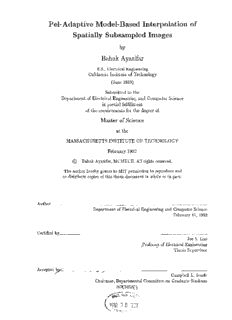
by
Convex Polyhedra with Regularity Conditions and Hilbert’s Third Problem
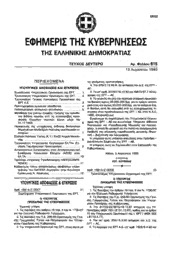
Greek Government Gazette: Part 2, 1993 no. 615
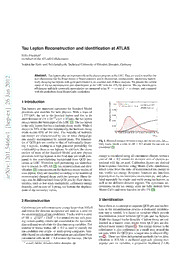
Tau Lepton Reconstruction and Identification at ATLAS
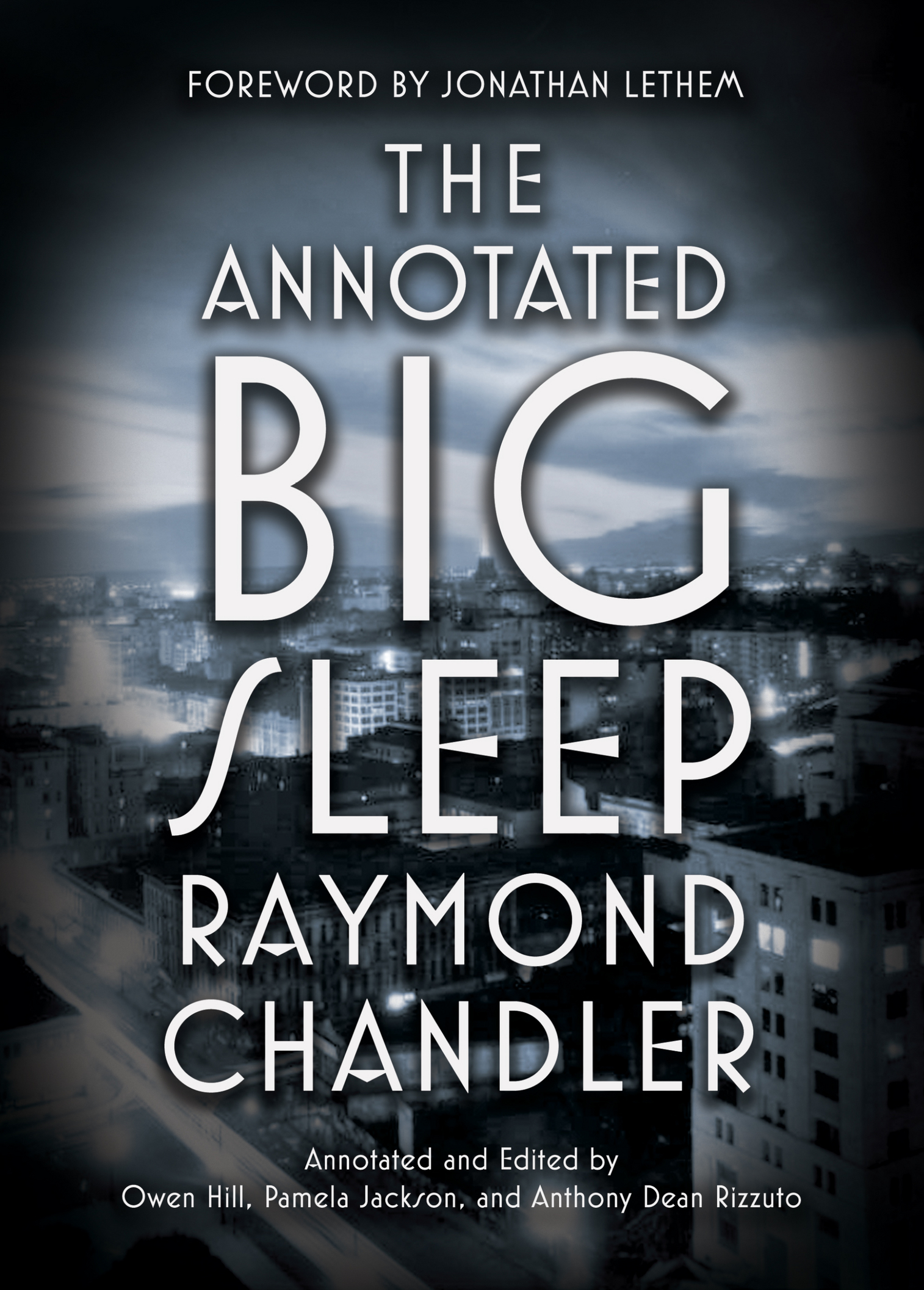
The Annotated Big Sleep
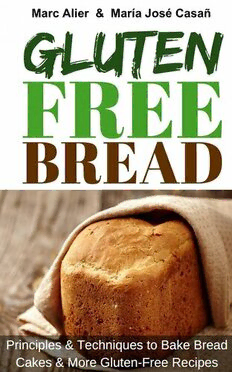
Gluten-Free Bread
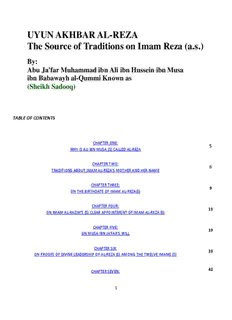
By: Abu Ja'far Muhammad ibn Ali ibn Hussein ibn Musa ibn

C. Indice de autores

Opportunities in fashion careers

C. S. Friedman - This Alien Shore

The Monctons A Novel Vol II by Susanna Moodie

ERIC ED381413: Emancipatory Education and Action Research. Action Research Series No. 1.
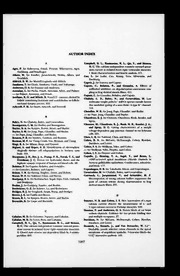
The Journal of General Physiology 1993: Vol 102 Index
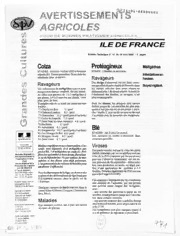
Avertissements Agricoles - Grandes cultures - Ile de France - 2006 - 12
